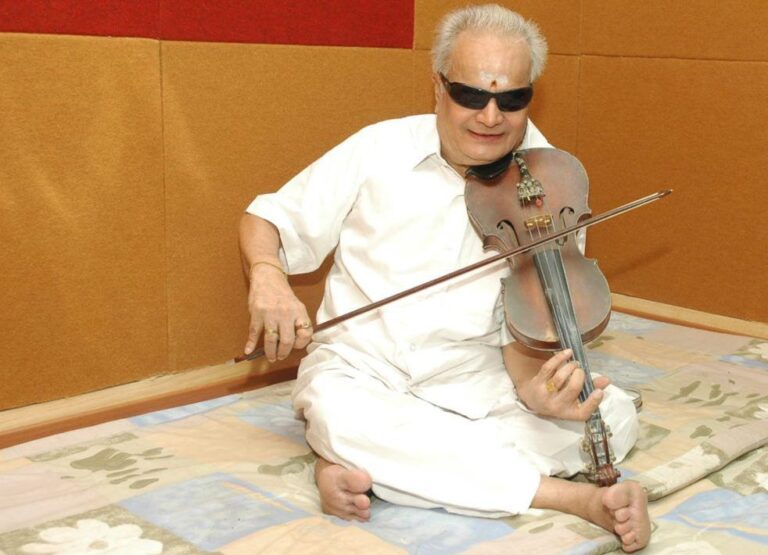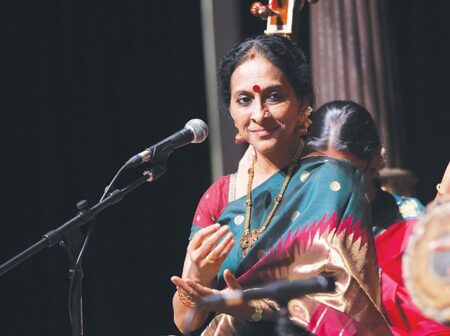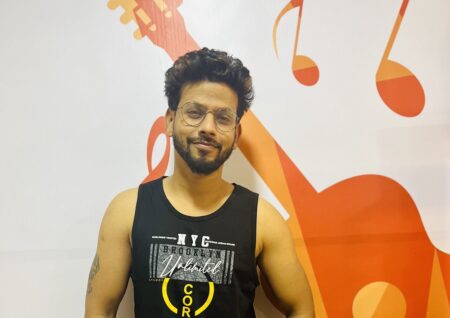Carnatic violin vidwan Sangita Kalanidhi Dr M Chandrasekaran turns 83 today. Having lost his eyesight at the age of two, the musician’s 72-year career is backed by dedication and hard work.
How was your childhood?
I was born in Calcutta as the youngest of the two sons of a Tamil couple. When I was five, my father T N Mohan got a transfer. Our family shifted to Kanpur. My mother, Charubala Mohan, was a violinist. When I was very young, I used to sit beside her and touch her violin when she played the instrument. My mother used to hear a lot of music while she was expecting. That way I was exposed to music even before I was born.
How did your violin training happen?
My mother started training me when I was seven years old. She made me who I am today. It is all her hard work. Everything came right at the start, but positioning the bow was a big challenge. But my mother did not give up. We tried hard and finally, it worked. She would ask me to sing the composition first. Only then I was allowed to play on the violin. It helped me to perfect the bhava. Now, when I teach, I follow this method.
Later, I learned vocal from Mannargudi Sambasiva Bhagavatar, Kumbakonam S Viswanathan, Vidyala Narasimha Naidu and T Jayammal. But in violin, my mother is my only guru. When I was seven, my father died and we shifted to Madras in 1945. I gave my first stage performance at the age of 11 at the Thyagaraja Sangeetha Vidwath Samajam, Mylapore.
While you accompany a vocalist, you gel with them so perfect….
Yes, I have accompanied six generations of musicians. Great yesteryear vidwans such as Maharajapuram Viswanatha Iyer, Musiri Subramania Iyer, TR Mahalingam (flute), Madurai Mani Iyer, Chembai Vaidyanatha Bhagavathar, TK Rangachari, Ramnad Krishnan nad Madurai Somasundaram. From there, to numerous talented musicians of the younger generation today.
Accompanying is as important as a solo performance. Involvement is the key to success. As an accompanist, I never play for myself showcasing my expertise, Instead, I try to match the style of the vocalist. Whether the fast brigas of GN Balasubhramanium, bhava-laden music of Palakkad KV Narayanaswamy or the fast-paced rendering of Madurai Somu, I take their style. It is then a concert becomes successful.
You have accompanied Narayanaswamy and Somu for many concerts. Share some experiences.
Narayanaswamy is like my guru. I started playing with KVN in 1954. We shared a warm relationship. I still remember a 1986 concert at Gayaka Samajam, Bangalore. He was singing Saveri and I was accompanying him. He paused for a moment and told the audience. “See how beautiful he is playing”. The same year he sang Krishnaneebegane in Mysore Palace for Dussera festival in such way that everyone got goosebumps. No one can sing like that. Somu used to sing for 5-6 hours at a stretch. He was a crowd-puller. Even to enjoy his thukkadas, rasikas used to flock. I have accompanied him for many concerts.
Do you have any favourite ragas?
Of course. I like Mohanakalyani, Sudhaseemanthini, Yamunakalyani, Thodi, Shanmukhapriya.
Your duets with TN Krishnan and jugalbandis with MS Gopalakrishnan were huge successes…
That’s because of matching wavelengths. We never practised together. The first duet with TN Krishnan was at Padma Seshadri School hall, Chennai in August 1971. Umayalpuram Sivaraman was on the mridangam and TH Vinayakram on the ghatam. We discussed what we were going to play and the rest fell into place. I have played jugalbandis with MS Gopalakrishnan, where he played Hindustani music and I played Carnatic. These duets and jugalbandis were a hit because we respect each other’s music.
You have also played many duets with nadaswaram Vidwans…
Yes. I have played a lot of duets with nadaswaram experts AKC Natarajan and Namagiripettai Krishnan. I just let the violin resonate and blend with them. Rasikas used to say my duets with Nadaswaram used to make them feel like two nadaswarams. Madurai Somasundaram could sing like Nadaswaram. It was very beautiful. Late musician Dr Sripada Pinakapani said, when Chandrasekaran plays, you can hear vocal, veena and nagaswaram all together.
On the stage, musicians get inspired by the seeing audience response. Without seeing you play so well and reply to the vocalist on correct tala. How do you do that?
I don’t know (laughs). But if I am happy I can perform well on that day. Generally, I believe an artist can perform well if he or she is happy. And to be happy, you have to be always active, both physically and mentally. That’s the key.
The secret of your success?
My mother was my pillar of strength. For instance, during a visit to London, she heard about Braille and learnt it soon to impart the lessons to me. It was quite something during those years. I can read and write Tamil, English, Sanskrit and Telugu and fluently speak all south Indian languages and Hindi. I can manage any Indian language.
In her memory, I have formed the Charubala Mohan Trust in 1998. The trust now supports young and emerging musicians and gives them awards every year.
Should a Carnatic musician stick to sampradaya concert or can he include lighter songs or film songs in a concert?
It depends on where you are performing and the perception of the audience. However, we have to perform heavy kritis and ragas for 75 per cent of the time. And then if the audience asks, you can play lighter songs, maybe Bharatiyar songs or film songs.
What music do you listen to?
Music is universal and I enjoy music in all forms. Carnatic, Hindustani, western, film songs including Tamil, Hindi and so on. Songs of composers such as CR Subburaman, G Ramanathan, KV Mahadevan, MSV-Ramamurthi are classics. (Hums Enthan nenjil neengathe from the movie Kalaignan). All the beauty of Nalinakanthi (raga) is woven into this Ilaiyaraja song. So we don’t have to keep a division saying this is film music or this is classical. Just hear all the good music.
Tell us about your family..
I have three sons and a daughter, violinist G Bharati. I play a lot of duets with my daughter. All the credits of running the family smooth go to my wife Pattammal.
Few words to the younger generation….
Dedication is as much as important as jnanam. Without dedication, music jnanam will be like dishes cooked without salt.
The interview was done in association with Neelakanta Sivan Cultural Academy, Chennai




